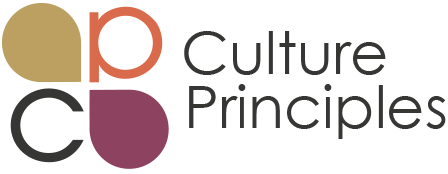
Leading a diverse team in today’s global business landscape presents unique challenges and opportunities for personal and organizational growth. As a native New Yorker, I grew up with a rapid pace and direct communication as the norm—so ingrained that any alternative seemed foreign. Imagine the cultural shift I encountered when moving to Louisiana for graduate school and later working at LSU. This transition highlighted the importance of navigating cultural differences—challenges that are often unnoticed until they directly confront us.
It’s crucial to acknowledge that while cultural backgrounds influence behaviors and preferences, they do not define individuals entirely. Each person has a unique personality and their own way of navigating the world. Recognizing this helps us avoid the pitfalls of viewing cultural groups as monolithic and instead appreciate the richness of individual differences within those groups.
Consider a diverse team at a large U.S.-based tech company, where differences in communication styles and work ethics frequently come into play. David from Silicon Valley, who values quick results and immediate feedback, often clashes with Lisa from the Midwest, who prefers thorough discussions and consensus. Meanwhile, Sarah, a Native American in Seattle, feels overlooked in assertive meetings, and Linh, a Vietnamese engineer, struggles with fast-paced discussions filled with American idioms. These are just a few examples I have encountered in my work with teams and boards.
How would you lead through these moments? What support would look like for your team members?
Leading through these dynamics requires more than traditional management skills; it asks of us, a deep understanding of the varied communication styles, societal norms, and unique cultural contexts that shape team interactions. Navigating this terrain is not about asking team members to assimilate but rather an opportunity to enhance our own cultural awareness and learn about the norms and patterns that may be prevalent in different cultural groups. Taking the time to explore and discuss these nuances not only boosts team effectiveness but also fosters a more inclusive environment.
Adapting to Cultural Dynamics
A leader’s role in nurturing an inclusive culture is critical in a world where work environments are increasingly multicultural. Effective leadership is not just about managing day to day operations but about understanding and embracing the cultural complexities of each team member. Consider these earlier examples.
- David and Lisa. In settings where quick decision-making is prioritized, cultural competence is key to the team’s success. As leaders we have the opportunity to foster an environment where both David’s need for speed and Lisa’s preference for consensus are respected. By appreciating the cultural underpinnings of their work styles, leaders can guide both to find a middle ground, enhancing collaboration and respect among team members.
- Sarah. Leaders play a critical role in adjusting meeting dynamics that may favor more assertive voices. By instituting protocols ensuring equitable participation, leaders can leverage diverse perspectives, enriching decision-making processes and making all team members feel valued and heard.
- Linh. Offering language support and cultural communication training extends beyond inclusivity—it’s a strategic decision critical for leadership effectiveness. By assisting Linh and others who face similar challenges, leaders enable full engagement and contribution from all team members and enhance their own cultural fluency. This process increases self-awareness, particularly in understanding how those from different cultural backgrounds might interpret specific phrases. For instance, in my hometown, NYC, the phrase “You good?” can signify a range of meanings.
The Leader’s Role in Cultivating Cultural Awareness
Leaders benefit from actively working to understand the cultural backgrounds and personal experiences that each team member brings to the table. This involves more than passive acknowledgment; it requires a proactive approach to learning and adaptation. Whether leaders facilitate or participate in cultural competence training, encourage open dialogues about cultural differences, or utilize another strategy, they can model the inclusivity they wish to see within their teams through engagement.
The Risks of Neglecting Cultural Awareness
Neglecting a team’s cultural dynamics can significantly impact both individuals and the collective. While addressing these nuances has substantial benefits, overlooking them can cause lasting negative effects. Misunderstandings and tensions might disrupt current projects and erode trust and collaboration in the long run, diminishing the team’s morale and productivity. Such oversights can suppress innovation and diminish the willingness of team members to contribute their unique insights, severely limiting the team’s potential.
- David. If David’s natural sense of urgency is not balanced with understanding his colleagues’ need for deliberation, it can foster an atmosphere of tension and dissatisfaction. Perceived as overly aggressive, he may alienate colleagues, who may be less likely to collaborate.
- Lisa. Conversely, although valuable, Lisa’s methodical approach might frustrate those who thrive under tight deadlines and fast-paced conditions. This desire to attend to every detail could create perceptions of inefficiency, possibly reducing her influence and leadership within the team.
- Sarah. A lack of recognition in meetings can sideline Sarah, making her reluctant to share her insights. This not only marginalizes her but may also restrict the diversity of ideas and solutions the team can explore.
- Linh. By not addressing communication barriers, there can be an increase in misunderstandings and errors with Linh, diminishing their effectiveness and potentially causing costly delays in projects.
Engage and Evolve
As a leader, reflecting on your role in enhancing cultural competence within your team is essential. Consider the following:
- How can you improve your understanding of each team member’s cultural and individual background?
- What steps can you take to ensure that cultural nuances are not just noted, but actively integrated into your team’s operational dynamics?
- How can you foster an environment where cultural learning and sensitivity are ongoing?
The journey towards cultural competence is continuous and requires commitment, empathy, and curiosity. Leaders who embrace these challenges and opportunities can transform their teams into dynamic, collaborative, and highly effective units.
